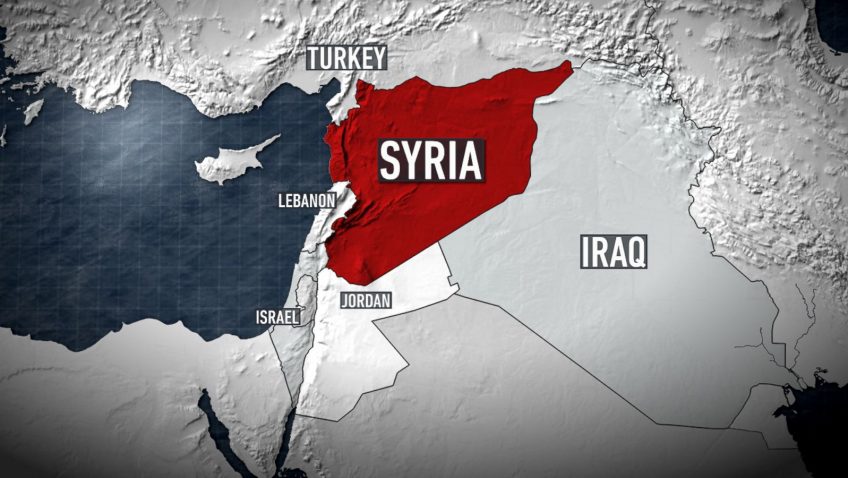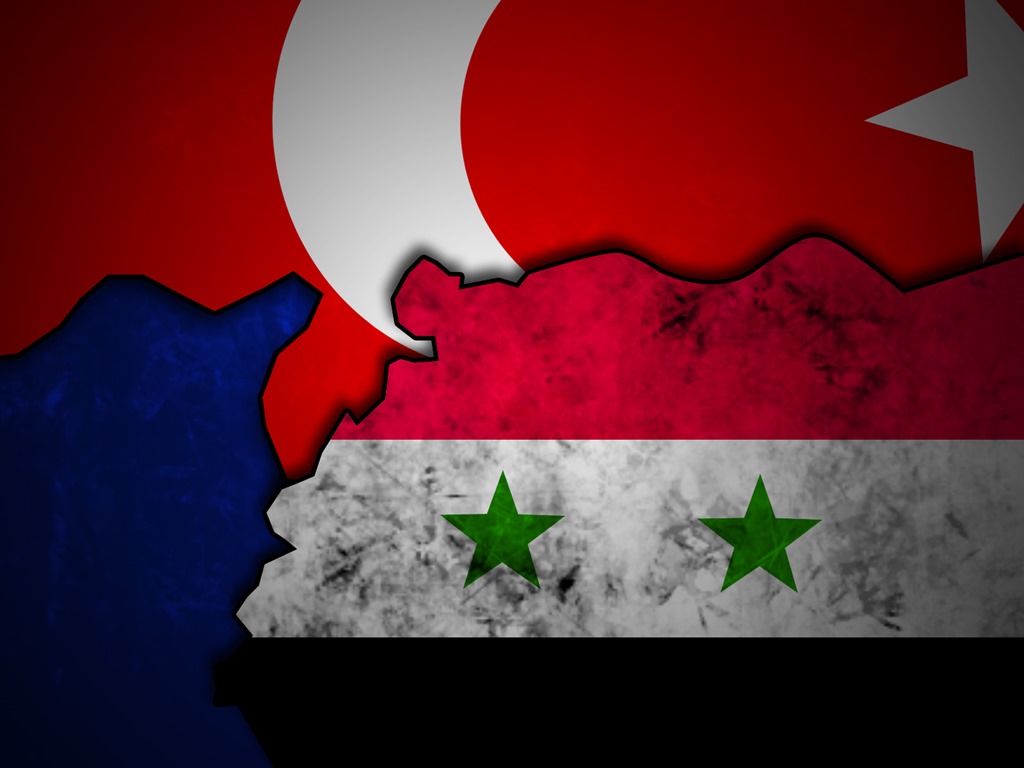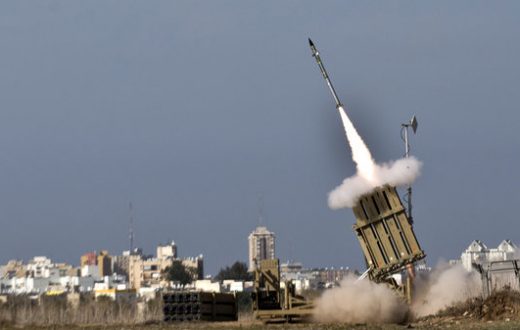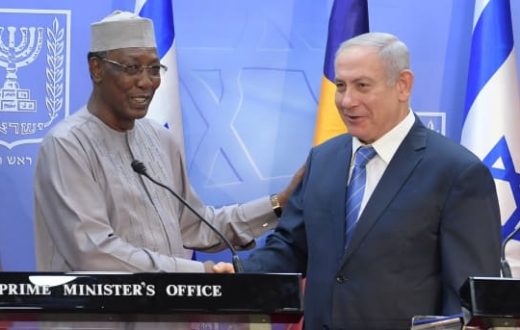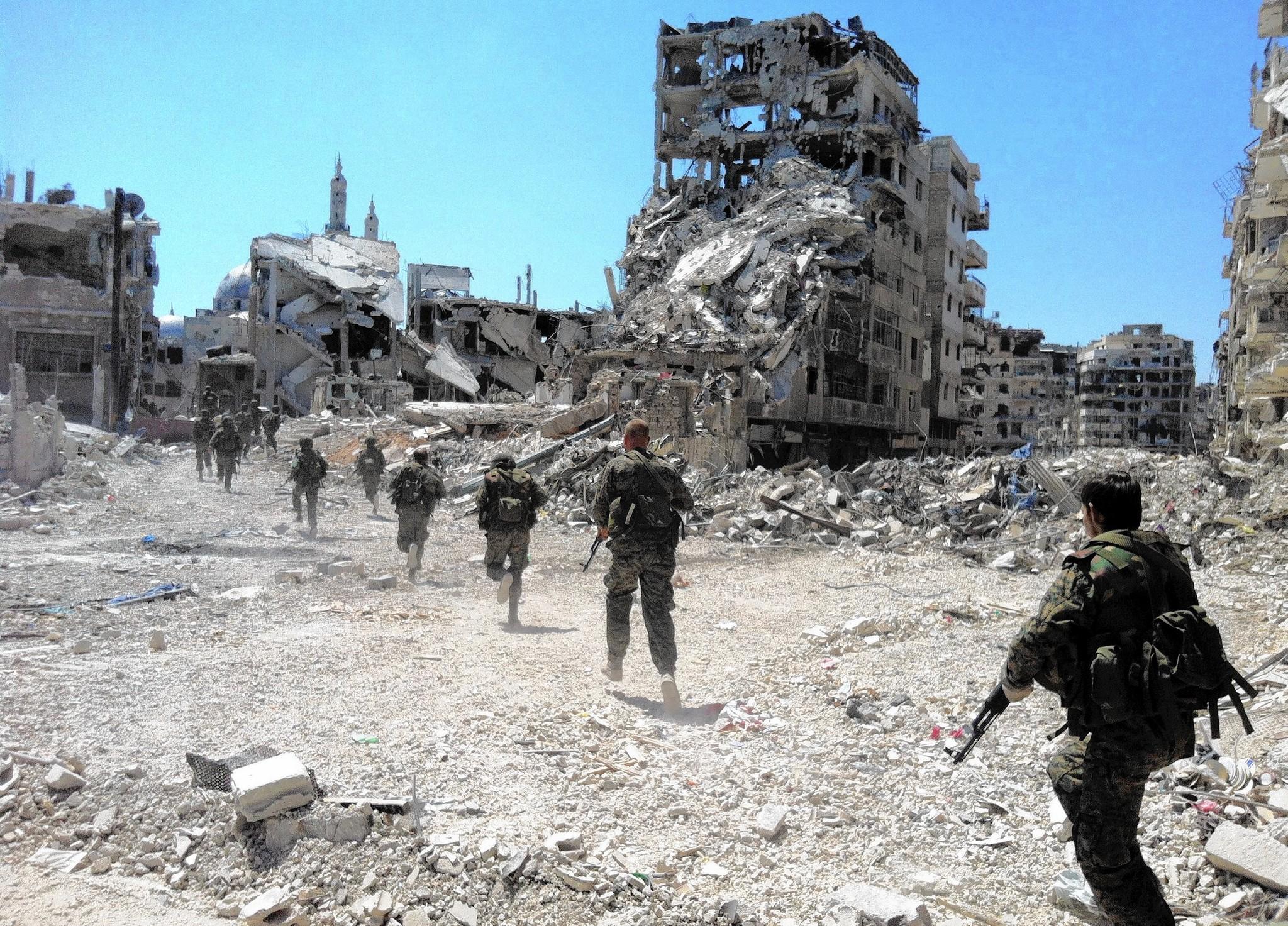This article was written by Uri Dekel, and Originally published by the INSS. Article is available here.
The campaign underway by the Assad regime for the control of southern Syria, with eyes toward the Golan Heights, is yet another stage by the regime for control of the remaining rebel strongholds in Syria. Israel’s acquiescence regarding the deployment of Assad’s forces in the south, including in the Syrian Golan Heights, indicates that Israel is prepared to accept the return of Assad’s control along the border, though his forces are supported by Shiite militias and his army directed by Iranian commanders. Israel is relying on Russia to remove the Iranian forces and the Shiite militias from the border area, in exchange for Israel’s not attacking regime forces. Israel has the positive experience of the quiet and stable border with Syria that existed prior to the civil war, when Assad controlled the Golan Heights and constituted a responsible address for what occurred on the other side of the border. On this basis, Israel should launch a dialogue with the Assad regime, apparently via Russia at this stage, in order to establish stability and calm in the Golan Heights, establish the rules of the game, and discuss the limitations (in terms of geography and weapons) on the presence of Iran and its proxies. At the same time, Israel must continue to prevent the construction of an Iranian military infrastructure in Syria and retain its ability to harm the Assad regime if it deviates from the understandings and rules of the game that are established.
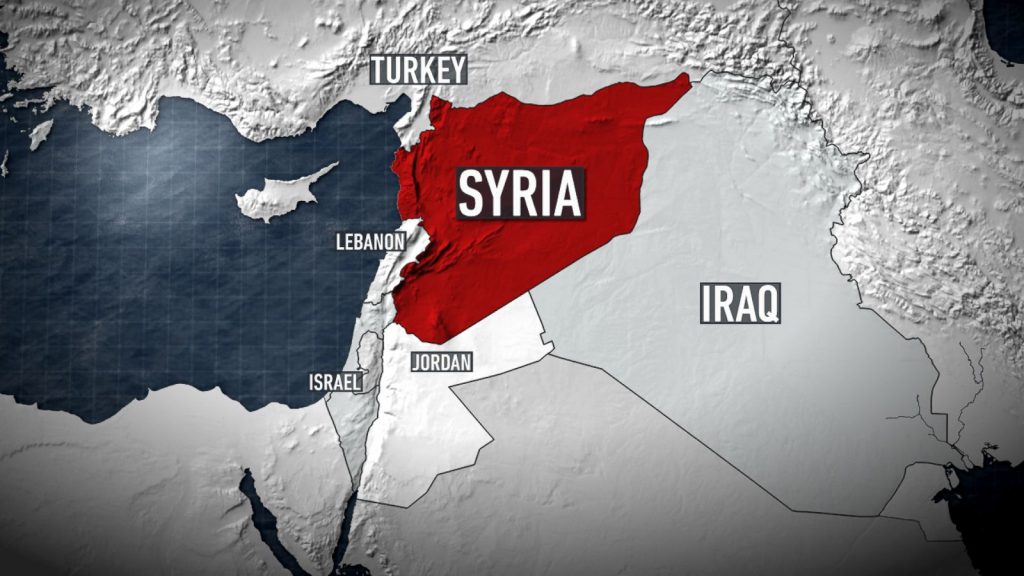
Over the past two weeks, with the assistance of Russia and other allies, the Assad regime has conducted a military campaign aimed at seizing control of the Daraa district in southern Syria, with its eyes toward the Syrian Golan Heights (the Quneitra district). Its modus operandi is similar to what it has employed in other parts of Syria: heavy artillery fire on rebel strongholds, airstrikes that include Russian fighter aircraft, and a Russian invitation to engage in negotiations leading to the rebels’ handing over their weapons, or in other words, their unconditional surrender. As elsewhere in Syria, this military pressure has led to the collapse of rebel lines and the surrender of many localities without a fight. However, as long as the rebels refuse this offer, the attacks on their strongholds continue with mounting intensity, and Russia’s terms for a cessation of hostilities are increasingly stringent.
Southern Syria is one of the last rebel strongholds. This region has enjoyed relative stability since its inclusion in the “de-escalation zones” by means of an agreement between Russia and the United States formulated in July 2017 with Jordanian and Israeli involvement. However, there was no doubt that this de-escalation was only temporary. The campaign to seize control of Daraa is of symbolic importance for the Assad regime, as it is the region in which the uprising erupted initially in March 2011.
The motivation to violate the ceasefire and launch an offensive aimed at seizing control of the region has a number of levels. The first justification of the Assad regime for the campaign is that the area constitutes a breach through which terrorist elements associated with the Islamic State enter Syria. Indeed, the southern Golan Heights and the Yarmuk basin are still controlled by an Islamic State proxy, the Khalid ibn al-Walid Army. Second, as argued by the Syrian opposition, the goal of the campaign is to change the balance of power by improving the regime’s positions in the political contacts underway toward a settlement to stabilize Syria, and to establish the fact that Assad controls most of the country’s populated regions. The Daraa district itself is the southernmost part of the “Syrian backbone” (from Aleppo in the north, through Homs and Damascus, to Daraa in the south), which is vital to the regime. Third, once the pro-Syrian coalition completed its conquest of the area surrounding Damascus, southern Syria is a relatively comfortable area to conquer in comparison to the two other regions that remain under rebel control: Idlib in northern Syria, which is a Salafist and Islamist Sunni stronghold, and northeastern Syria, which is controlled by the Kurds via the Syrian Democratic Forces (SDF), which are supported by the United States.
In addition to being an internal Syrian struggle and a struggle for Assad’s interests, the conflict is also a power struggle among major powers. From a broader perspective, the campaign is cast as part of a “deal” that Russia is trying to promote vis-à-vis the United States and Israel, which includes the removal of Iranian forces from southern Syria in exchange for the two countries’ acceptance of Assad’s control over Syria in its entirety. In this framework, Israel’s acquiescence to the deployment of Assad’s forces in the south, including the Syrian Golan Heights, would mean de facto acceptance of Russia’s demand that Israel refrain from attacking the Assad regime, in exchange for removing Iranian forces and its proxies from regions that are in close proximity to Israel and Jordan. According to this logic, Israel must refrain from intervening when Assad’s forces bombard the rebel forces and take control of the area adjacent to its border in the Golan Heights.
At the same time, Russia is engaged in contacts with the United States in advance of the presidential summit between Trump and Putin, scheduled for July 16 in Helsinki. At work is an attempt to take advantage of President Trump’s desire to fulfill his commitment to withdraw US forces from Syria. Russia is eager for the United States to evacuate the base in al-Tanf in southeastern Syria, which is an area that is no longer central to the establishment and training of rebel groups but over time became an obstruction along the direct land route from Iran to Syria via Iraq. There is evidence that the United States is reconsidering the necessity of the base, particularly after sending the rebel forces a message that it would not intervene or provide them with support in the fighting in the south. In addition, Russia will find it convenient to make proposals to the United States regarding the removal of Iranian forces from Syria, with the Trump administration’s acceptance of Assad’s remaining in power after he reassumes control over Syria as a whole.
As a result, the fighting area in southern Syria embodies a paradox. Russia is proposing to Iran the establishment of a land bridge, which it desires, but in exchange Tehran must agree to the removal of its forces and those of its proxies – Shiite militias and Hezbollah – from southern Syria. Russian-Iranian relations are by nature characterized by a dynamic of “respect and suspicion.” Russia is trying to leverage recent developments, including Assad’s fear that Iran will draw it into a military confrontation with Israel, in order to establish a reality in which it holds the reins of power in Syria. On the other hand, Iran has no intention of giving up its influence and the consolidation of its presence in Syria, and is incorporating Revolutionary Guard commanders and fighters of the Shiite militias that are under its control into the ranks of the Syrian army, which is fighting the rebels in the south (specifically, the Tiger Forces and the National Defense Forces, or NDF).
President Trump has actually come to terms with the Russian dominance in Syria, as well as with Russian assistance that enables the Assad regime to establish control over the regions near the Jordanian and Israeli borders. He has done so in exchange for Russian guarantees that the Syrian regime will not slaughter the US-supported rebel forces, will allow them to leave the regions in southwestern Syria, and will stop forces supported by Iran from entering the region. With regard to the fighting in the region, a Pentagon spokesperson has emphasized that the United States remains focused on defeating the Islamic State, and that all the actors in the region are advised to not attack US forces and their partners in the coalition in the struggle against the Islamic State.
Consequently, opposition elements and rebel forces in Syria are facing the familiar scenario of abandonment by the countries supporting them on doomsday. This time, the countries to do so are the United States, Jordan, and Israel, which supported the rebel forces, and primarily the Free Syrian Army, and are now standing on the sidelines and allowing the pro-Assad coalition to attack them and the Syrian civilians living in the areas under their control. Nassar al-Hariri, head of the Syrian opposition’s High Negotiations Committee, has denounced what he refers to as “the American silence” in the face of the attack,” and has argued that only a “malicious deal” could explain the US failure to respond in light of the events on the ground.
According to information provided by the UN, the current fighting has resulted in the displacement of approximately 300,000 people from their homes. Most of the displaced persons are concentrated close to the border with Jordan, and thousands have settled close to the border with Israel, in the demilitarized area between the two countries that was established under the Agreement on Disengagement signed by Israel and Syria in 1974. Both Jordan and Israel are determined to prevent refugees from seeping into their territory. Israel is providing humanitarian aid to displaced persons who have settled close to its border and has announced that it will not allow the Syrian army to enter the demilitarized zone. To demonstrate its resolve, Israel has reinforced its troops in the Golan Heights.
Implications
The developments in the Daraa region underscore that the opposition is gradually losing control over its primary stronghold in southern Syria, which was the symbol of the uprising, whereas the regime is reasserting its control and influence. Once again, the rebels’ hopes for external aid to withstand the steamroller of the pro-Assad coalition have been dashed, and the rebels are faced with the reality that they are alone in the fight.
It appears that for some reason Israel and the United States are relying on Russia, with the expectation that it will remove the Iranian forces and the Shiite militias to a distance of 60-70 kilometers from the border with Israel and Jordan. Indeed, they would like Russia to eject the Iranian forces and Shite militias from Syrian territory altogether. In exchange, they are willing to come to terms with Bashar al-Assad retaining the post of President of Syria and with the continued rule of the man who is responsible for the murder of close to half a million Syrian citizens. In addition, it appears that the United States and Israel will not prevent the forces of the pro-Assad coalition from liberating the remaining territory that is still under rebel control (particularly in northern and northeastern Syria). Whereas the Trump administration seeks a settlement that will allow the quick withdrawal of US forces from Syria, Israel has chosen to accept that Assad is the winner of the civil war and hope that Russian influence in Syria will take precedence over that of Iran.
Israel has chosen to turn a blind eye to the fact that the forces belonging to the Shiite militias have been absorbed into Assad’s forces and are fighting in the Daraa area. It would thus be a mistake to assume that at the end of the fighting, the Assad regime will accede to Russia’s demand to remove the forces of Iran and its proxies. The Assad regime’s seizure of control of southern Syria and the Golan Heights will result in the perpetuation of a foreign Shiite presence in the south, whether camouflaged within the army and within Syrian militias, or as ostensibly local Shiite militias directed by Iran.
Israel is risking one of its important achievements of the years of the war in Syria thus far: the establishment of a stable and quiet border in the Golan Heights based on understandings with the local communities on the Syrian side of the border, whereby they receive humanitarian and civil aid in exchange for preventing terrorist activity from being launched from their territory against the Golan Heights. Now, Israel is ready to accept the return of control along the border region to the Assad regime, while knowing that Assad’s forces are supported by the Shiite militias and that his army is directed by Iranian commanders – all with the futile expectation that Russia will remove the Iranian forces and its proxies from Syria.
Still, Israel has the positive experience of a quiet and stable border with Syria that existed prior to the civil war, when Assad controlled the Golan Heights and constituted a responsible address for what occurred on the other side of the border. Today, Israel appears to have assessed that in the new situation, Assad will have an interest in maintaining calm along the border, as its interests are not identical with those of Iran and Hezbollah. If so, Israel should launch a dialogue with the Assad regime, apparently via Russia at this stage, in order to establish stability and calm in the Golan Heights, establish the rules of the game, and discuss the limitations (in terms of geography and weapons) on the presence of Iran and its proxies. At the same time, Israel must continue to demonstrate resolve in preventing the construction of an Iranian military infrastructure in Syria, with an emphasis on capabilities that threaten it, and retain its ability to harm the Assad regime if it deviates from the understandings and rules of the game that are established.
Udi Dekel, who joined INSS as a senior research fellow in 2012, was head of the negotiations team with the Palestinians in the Annapolis process under the Olmert government. In this framework, he coordinated the staff work and led twelve negotiating committees. In February 2013 he was appointed Managing Director of INSS.
Brig. Gen. (res.) Dekel filled many senior IDF positions in intelligence, international military cooperation, and strategic planning, His last post in the IDF was head of the Strategic Planning Division in the Planning Directorate of the General Staff, and as a reservist he is head of the Center for Strategic Planning. Previously he served as head of the foreign relations section in the General Staff and head of the Research Division in Lahak, Israel Air Force Intelligence. Brig. Gen. (res.) Dekel served as head of the Israel-UN-Lebanon committee following the Second Lebanon War and head of military committees with Egypt and Jordan. In addition, he headed a working group on strategic-operative cooperation with the United States on development of a response to the surface-to-surface missile threat and international military cooperation. He served on the 2006 commission to update Israel’s security concept and coordinated the formulation of IDF strategy.
Brig. Gen. (res.) Dekel’s areas of research include: decision making processes in Israel and the connection between policy and the military; the multidisciplinary integration in Israel of policy, diplomacy; the military; economics, society, and communications; the peace process with the Palestinians and with Syria; strategic trends in the Middle East and challenges for Israel; the influence of the new media on the Arab world and Iran; security concepts; strategic military concepts; and strategic planning processes.

